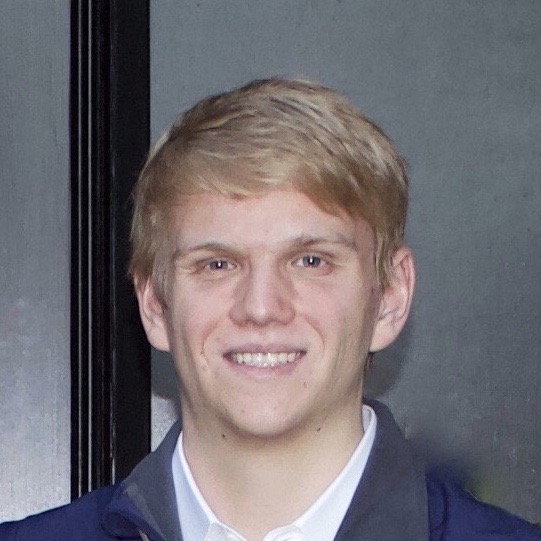Education - University of Texas, Austin
- BS Mathematics, BBA Quantitative Finance; Class of 2022
Rubicon Finance
- Quantitative Software Developer; January 2022 to Present
-
While at Rubicon, I spearheaded three major projects - (chronologically) a minor but urgent trading infrastructure upgrade, an exchange SDK, and a total trading infrastructure rewrite.
-
This original upgrade was designed to be implemented quickly, to integrate as well as possible with our legacy system, and above all else to be exception-free in production. It met with success - the increased performance and market visibility allowed us to quote bid-ask spreads that were at times around 10 times tighter than the legacy system, and led to a meaningful increase in trading volume. And thus far, it has been exception-free in production - it's had zero downtime over the course of 8 months or so, except for planned feature upgrades.
-
This (like all of these projects) was written in Rust. In particular, though, the backend consisded of a number of websocket connections (powered by tokio-tungestenite) to centralized exchange (in particular, Coinbase, Kraken, and Binance). The front end, which faced our other trading infrastructure, was a simple REST server (built on top of actix-web) that communicated with our execution engine.
-
The next major project was the exchange SDK. It was designed to be a performant, but simple way to interact with Rubicon's exchange. Simplicity was a strong emphasis here - while the original use of this SDK was internal, it was always intended to be open-sourced. Like all of these projects, it was written in Rust, primarily leveraging ethers-rs.
-
The final project was a complete rewrite of our trading infrastructure (which is still ongoing). It has three goals: to be as extensible as possible (in particular, to ease onboarding of new team members), to be as performant as possible (targeting a sub 10ms tick to trade (ignoring network latency)), and to be as fault tolerant as possible. While it isn't production ready yet, it has already been extremely useful in debugging our existing market making strategies.
-
At the core of this rewrite is tonic, a gRPC implementation for Rust. This brings static typing (via protobuf, the standard searialization format for gRPC) and HTTP/2 streaming to our stack, which has been a huge boon to both developer experiance and system performance and has comfortably measured up to the project goals outlined at the outset.
Projects
-
- Built in collaboration with Dwarkesh Patel.
- This site allows users to perform semantic search across a library of a few thousand books, and then to answer a question using that returned data.
- The real goal of this system was to be a testbed to develop ideas with, and to learn from, and in that aspect it absolutely succeeded.
- The backend consists of Python-based AWS Lambda functions doing semantic search on a pinecone pod, calling OpenAI services, and reading/writing data to firestore.
- On launch day, this system handled a little more than a search per second at peak.
-
-
These were two projects undertaken over the course of a school year, supervised by a graduate student mentor (Riccardo Pedrotti).
-
The first project was primarily concerned with explaining the symplectic version of Noether's theorem. Roughly speaking, this states that if you have some continuous symmetry (e.g. rotation) of a symplectic manifold (e.g. phase space (position and momentum)), you will have some unique conserved quantity (in this case, angular momentum). It was largely based on this paper. My presentation slides can be found here.
-
The second project was focused on Heisenberg's uncertainty principle, again from the perspective of symplectic geometry. Basically, you can imagine that the uncertainty principle is fundamentally a statistical statement, you can understand those statistical claims in geometric terms, and those geometric terms have to obey very rigid symplectic laws. It was largely based on this paper. Presentation slides can be found here.
-
I find both of these projects interesting because they both address a fundamental physical phenomenon without recourse to physics itself - the basic theorems here could just as easily be applied to any symplectic system that meets the appropriate assumptions. At the time, I was interested in applying these to the world of asset pricing theory and risk, respectively, but they could easily be applied just about anywhere.
-
Both projects heavily depended on McDuff and Salamon's Introduction to Symplectic Topology.
